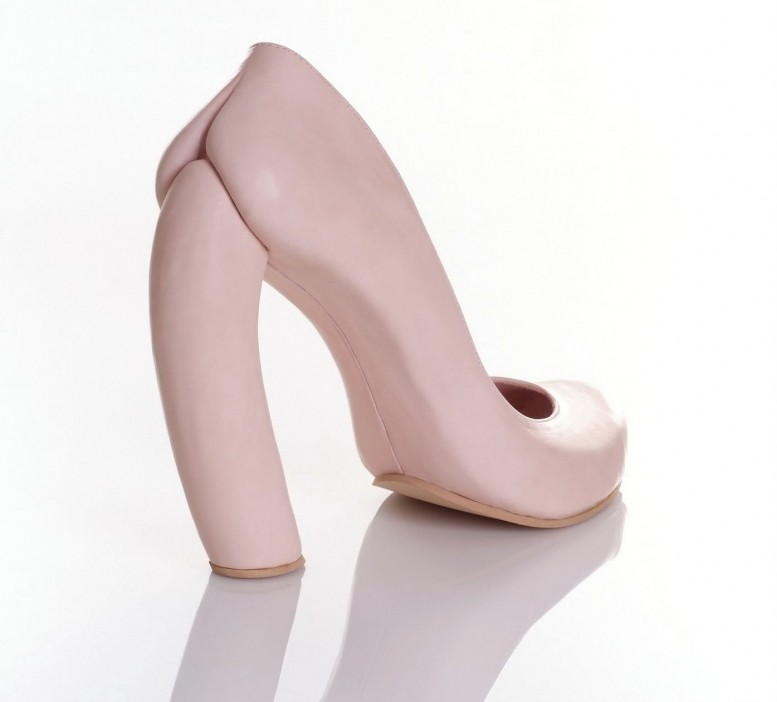Image courtesy of Company Gallery
It was February 2024, and one model at the Women’s History Museum show couldn’t stop falling over. Determined, she trundled down the runway only to trip once again. The culprits were obvious: two enormous, cumbersome brown boxing gloves attached to the toes of classic stiletto. “Take them off!” cried members of the audience, a mixture of fashion insiders and queer iconoclasts. Still, the model made it to the end and hoisted the gloves in her hand, triumphant. K.O.
Unlike most New York footwear, the shoes of Women’s History Museum are not designed with functionality as a priority. In a city where pedestrians reign supreme and comfort is a must, the shoes of fashion label/art duo/vintage store curators Amanda McGowan and Mattie Rivkah Barringer are here to tell a story. Whether they’re white wedding heels bedazzled with a clatter of bones and colorful pills or gold boxing slippers rendered into precarious platforms by two wooden pillars, the shoes of Women’s History Museum exist in the sweet spot between strength and softness, power and precarity, barbarity and beauty.
Vintage remains an essential reference point for the duo. They maintain a carefully curated secondhand designer shop on Canal Street, sort of a modern-day SEX, stocked with everything from ‘80s Vivienne Westwood and ‘90s Gaultier to Edwardian furs and linens. In a similar style to early Alexander McQueen, Barringer and McGowan mine fashion references of the past – Victorian riding boots, rocking horse platforms, 70s crocodile skin clogs – for highly stylized fashion performances that entice as much as they reject traditional categories of beauty. The result is something that feels entirely 2025 in all its shredded, everything-out-in-the-open glory. Throughout Women History Museum’s nine staged collections, they return to similar references: animal prints and pelts; competitive sports, particularly boxing; and New York City, with the coins and shattered glass that cover the sidewalks. The clothes bare skin and barb it too.
Shoes, in many ways, remain the ultimate fetish object. They’re exalted, often the most expensive part of an outfit, yet they spend most of the day in contact with the filthy sidewalk. They’re civilizing, often constricting, and conceal the foot, which remains almost as hidden from public life as the body’s most nether regions. Shoes have often been used to control women as with painful and restrictive footbinding practices, yet their erotic potential is undeniable, as with the long, sensuous lines created in the body with a clear plastic pleaser. It’s no wonder that they served as the basis for Women’s History Museum’s latest show at Company Gallery, on display until June 21. Autre caught up with Barringer and McGowan to talk stilettos, surrealism, and the seriously sinister parts of living – and walking – in New York City. Read more.



